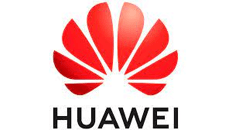Master Thesis Opportunity –Physics Inspired GenAI for Physical-layer Wireless Communications
Location: Kista, Stockholm
Preferred starting date: Jan. 2026
Extent: 1-2 student, 30hp.
About the company
Founded in 1988, Huawei Technologies is one of the fastest growing telecommunications and network solutions providers in the world. At Huawei Technologies, we look for people who share our vision: to enrich life with communication. We are a leading supplier of next generation telecom networks and currently serve 37 of the world’s top 50 operators. Our people are committed to providing innovative products, services and solutions and understand it as their mission to create long-term value and growth potential for our clients.
The Huawei office in Sweden is the leading overseas R&D office in Huawei, and the Wireless Algorithm group at Huawei Sweden drives innovation for the Huawei Wireless RAN product. We work on both advanced receivers and on Radio Resource Management algorithms, for both LTE and 5G.
Thesis description
This project investigates the use of generative models for wireless channel modeling. Deep learning has shown great potential in advancing wireless communications; however, its practical application remains challenging due to the scarcity of realistic wireless channel datasets, which are costly and time-consuming to produce. To this end, the ability to generate realistic and representative channel data is essential for developing efficient and effective data-driven algorithms in wireless communications.
Several generative approaches have been proposed for wireless channel synthesis, but their outputs often lack geometric validity and fail to capture the underlying physical characteristics of the environment. To address these limitations, this project aims to incorporate physical environment understanding into the generative model design, leading to more physically consistent and interpretable channel representations.
This physics-informed generative approach offers several key advantages:
- Enable large-scale channel data generation without extensive measurement campaigns.
- Incorporating physical knowledge as prior information produces more realistic and physically consistent channels.
- Embedding physical constraints reduces model complexity and lowers data requirements for training.
The ultimate goal of this thesis is to demonstrate that integrating physical knowledge into generative model design improves both the quality and interpretability of synthetic wireless channel data, thereby advancing the development of robust, data-driven physical-layer communication systems.
Your Profile
- Master student in Electrical Engineering, computer science or equivalent
- Good knowledge in signal processing, linear algebra, and optimization
- Hands on experience in machine learning, familiar with generative models
- Proficiency in Python and PyTorch/TensorFlow
For more information regarding this opportunity, please contact:
Jinxiang Song, jinxiang.song@huawei.com
- Department
- Wireless Algorithms
Stockholm
About Huawei Sweden R&D
Founded in 1987, Huawei Technologies is one of the fastest growing telecommunications and network solutions providers in the world.
In 2000, Huawei established the first overseas R&D office in Sweden. Huawei Technology Sweden is continuously growing and with 300+ R&D engineers located in Stockholm, Gothenburg and Lund we are trailblazing the path to future 5G and beyond with focus on standardization, research and pre-development.
Already working at Huawei Sweden R&D?
Let’s recruit together and find your next colleague.
